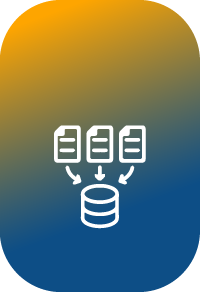Labelling data is a crucial phase in the development and training of machine learning algorithms. Data labeling services enable these models to develop a good understanding of the world around us, and its trend always keeps moving forwards. If you want to learn more about labeled and unlabeled data, you’re in the correct place. First, we will examine the basic concept of unlabeled and labeled data and the distinction between them. Let’s jump in right away.
A Brief Introduction to Data Labeling
Machine learning employs data and algorithms to imitate how humans learn and also focuses on improving accuracy. Data labelling in machine learning identifies raw data of text, images, and videos and add labels to provide an essential description so a model can learn from it. Labels always assist in identifying the image content or the speech in an audio recording.
Like humans who construct, train, refine and test ML models, labels enable these models to make accurate predictions. While generating a label, humans evaluate unlabeled data. They start by examining a picture and responding to the query. The query can be something like, “Is this an image of a man or a woman?” Data annotators guide the data labelling process by developing the relevant labelled datasets.
Differences between unlabeled & labeled data
Let’s begin by defining the differences between unlabeled and labelled data.
- Labelled data contains tags that are used for supervised learning, whereas unlabeled data are used for unsupervised learning.
- Labelled data needs an additional labelling procedure, whereas unlabeled data is basically raw data.
- Labelled data is more difficult to obtain (either you have fewer datasets or you must label it by yourself). On the contrary, unlabeled data is increasingly common.
Everything You Need to Know About Labelled Data
Using human annotators, labelled data works on unlabeled data sets with meaningful labels, tags or classes. Once a labelled dataset is created, it can be provided to a machine learning model so that it will precisely predict and allocate an appropriate label whenever it discovers unlabeled data.
- Labelled data is used in supervised machine learning, an approach to machine learning.
- It uses labelled datasets are used to train a machine learning algorithm in categorizing data or establishing accurate predictions.
- It is more difficult to acquire and store, which makes it expensive and time-consuming.
- It enables the identification of predictions.
Labelled data relates to both classification and regression tasks, which belong to the category known as supervised learning. These include the prediction of unknown values like:
- Mapping the link between two variables
- Examining scientific hypotheses
- Recognition of entities using speech-to-text and computer vision
Further, supervised learning can be divided into two subsets:
- Classification – Utilizing algorithms to accurately allocate test data for particular groups is classification. An example of this is separating spam from the inbox.
- Regression – Using algorithms to comprehend the connection between independent and dependent variables and predicting numbers based on various data points is regression. An example of this is sales revenue forecasts.
The objectives of supervised learning are more diverse, including:
- Recognizing objects in images
- Predicting the commodity price

All About Unlabeled Data
Unlabeled data lacks meaningful labels or tags and consist of easily accessible human-created samples such as photographs, videos, audio recordings, tweets, or news articles. To train ML models, computers use both unlabelled and labelled data, but what’s the difference?
- Unlabeled data is used in unsupervised machine learning, which applies ML algorithms to analyze unlabeled data sets by uncovering patterns without the assistance of humans.
- It is easier to gather and store.
- It has fewer applications.
Unsupervised learning draws insights from unlabeled data based on the quantified characteristics of datasets. It:
- Reduces the dataset’s dimensionality to reduce the number of resources necessary to train neural networks.
- Develops a neural network that converts a dataset into a more abstract representation.
Unsupervised learning models are employed for three tasks:
- Clustering
- Association
- Dimensionality reduction
Unlabeled data is usually linked with dimensionality reduction tasks and clustering, which are classified as unsupervised learning. It:
- Identifies subsets of findings with shared characteristics.
- Reduces the dataset complexity to minimize the processing resources required.
- Standardizes a training dataset for neural networks (A neural network is a type of machine learning model that teaches computers to analyze information in a manner similar to the human brain) like feature scaling.
Wrap up
Understanding these differences reveals the revolutionary power of machine learning. If you want the best data labeling services, contact the leading AI company in North America- Opporture!


